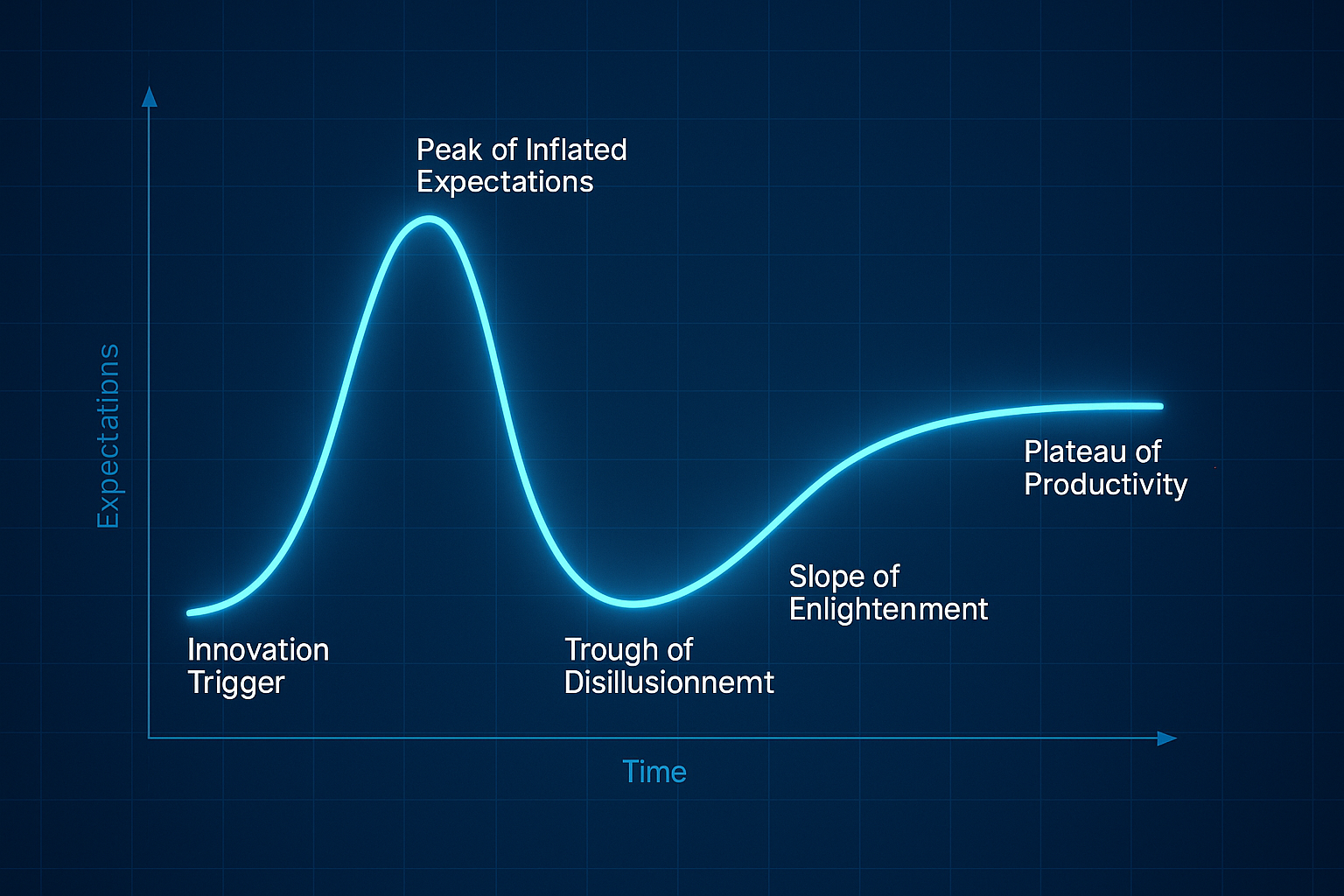Enterprises today face unprecedented cyber threats: AI-driven attacks, expanding digital footprints, complex supply chains, and rising regulatory expectations across the U.S., EU, and APAC. As cyber risk becomes a top-three business risk for global organizations, the need for a connected, continuous, and business-aligned cyber risk management platform has never been higher.
This guide offers a comprehensive comparison of nine top enterprise cyber risk management platforms, beginning with CyberSaint. It highlights each vendor's strengths and identifies potential limitations, particularly for large and complex organizations.
1. CyberSaint — Unified, Continuous Cyber Risk Management
CyberSaint is designed specifically for enterprise cyber risk management, integrating security, compliance, governance, and business risk into a single, unified platform. Unlike tools that bolt risk onto broader IT or workflow systems, the CyberStrong platform is architected for real-time, data-driven cyber risk insights at enterprise scale.
Where CyberSaint Excels
- Enterprise-wide visibility connecting controls, risk, compliance, and business systems
- Automation across frameworks and controls, reducing manual effort
- Continuous control monitoring via 1-click integrations with security and IT telemetry (AWS, Azure, CrowdStrike, Qualys, etc.)
- Integrated cyber risk quantification (CRQ) for financial, board-ready insights at every step of the way. Automatically benchmark your cyber risk data.
- Connected risk and compliance data enabling unified reporting across business units
- Regulatory readiness for frameworks like NIST CSF, DORA, ISO 27001, SEC rules, and more
CyberSaint is Ideal for
Enterprises need a single record for cyber risk, compliance, and reporting directly tied to business outcomes. The CyberSaint's platform provides a centralized solution for all these needs, with the added benefits of compliance automation and continuous control monitoring. This makes it an ideal choice for large organizations that need to manage cyber risk at scale and across multiple systems and frameworks.
CyberSaint's platform also excels in AI-powered control mappings across various frameworks and custom control sets. This reduces manual effort and streamlines workflows, saving time and resources.
2. OneTrust — Broad Trust Platform With Expanding Cyber Offerings
OneTrust began in privacy and data governance, and now offers broader IT risk and third-party risk modules.
Strengths
- Strong for privacy, data governance, and vendor risk workflows
- Large ecosystem of trust-related features (privacy, ESG, ethics, security)
- Familiar with organizations with privacy-driven programs
Limitations
- Cyber risk capabilities are less specialized than dedicated platforms
- Heavy configuration required for enterprise-grade cyber risk processes
- Quantification and technical telemetry integration are not native strengths
Best Fit: Organizations already using OneTrust’s privacy/data governance modules.
3. BitSight — Leader in Security Ratings
BitSight pioneered the cyber rating space and remains widely used for third-party cyber risk visibility.
Strengths
- Best-in-class for external security ratings
- Valuable for vendor/supply chain risk and external posture monitoring
- Useful benchmark data for boards and procurement teams
Limitations
- Primarily an externally focused tool
- Not a complete cyber risk management platform
- Bitsight does not have unified internal control or compliance management capabilities
Best Fit: Enterprises seeking continuous vendor risk monitoring or external exposure insights.
4. MetricStream — Traditional GRC With Cyber Extensions
MetricStream is one of the most established GRC vendors and is commonly seen in large enterprises with mature risk and audit functions.
Strengths
- Robust enterprise risk workflows
- Strong governance, audit, and compliance modules
- Scalable for large organizations
Limitations
- Heavy implementation cycles
- Cyber modules are traditional GRC, not real-time cyber platforms
- Limited automation and technical integrations compared to modern tools
Best Fit: Organizations with a centralized GRC program requiring strong workflow governance.
5. ServiceNow — ITSM-Driven GRC for Existing SNOW Environments
ServiceNow’s risk and security modules are designed to sit within its broader IT service management platform.
Strengths
- Deep integration with IT workflows, CMDB, and ticketing
- Useful for operational alignment across IT and security teams
- Attractive for organizations standardized on SNOW
Limitations
- Cyber risk is not a core competency
- Risk workflows often become process-driven rather than risk-driven
- Limited native financial quantification
Best Fit: Enterprises heavily invested in ServiceNow and want risk workflows, not full cyber risk lifecycle management.
6. RegScale
RegScale focuses on compliance and rapid mapping across regulatory frameworks.
Strengths
- Strong for compliance management
- Automation for evidence collection and regulatory mappings
- Appeals to regulated industries (government, critical infrastructure, financial services)
Limitations
- Cyber risk capabilities are emerging, but not fully integrated
- Minimal quantification or business-aligned cybersecurity reporting
- Best viewed as a compliance tool, rather than full cyber risk management
Best Fit: Compliance-heavy organizations that require continuous documentation automation.
7. LogicGate
LogicGate’s Risk Cloud is known for flexible, no-code workflows.
Strengths
- Highly configurable, adaptable workflows
- Good for custom governance processes
- Strong UI for building risk and compliance forms
Limitations
- Cyber risk is qualitative and form-based
- Lacks technical telemetry integrations
- No financial quantification or unified risk-compliance reporting
Best Fit: Organizations needing configurable GRC workflows without deep cyber requirements.
8. Balbix
Balbix excels in vulnerability and attack surface management, powered by AI and predictive analytics.
Strengths
- Strong vulnerability risk prioritization
- Deep technical visibility for IT and security operations
- Good complement to SIEM/EDR tools
Limitations
- Focus is on technical risk, not enterprise cyber risk
- No full lifecycle governance, risk, or compliance capability
- Reports skew technical vs. business-aligned
Best Fit: Security teams seeking tactical exposure reduction.
9. CentralEyes
CentralEyes focuses on automated assessments and compliance management, with some risk features.
Strengths
- Easy to deploy
- Out-of-the-box templates and dashboards
- Attractive pricing for mid-market
Limitations
- Not designed for complex enterprises
- Limited scalability, quantification, and telemetry integration
- Best for teams needing simple assessments, not enterprise programs
Best Fit: Mid-market organizations seeking lightweight cyber risk and compliance workflows.
How to Choose the Right Enterprise Cyber Risk Management Platform
When evaluating platforms, enterprise security and risk leaders should prioritize the following capabilities:
- Integration & Connectivity
- Can the platform unify controls, compliance, risk, threat, and business data?
- Does it integrate with SIEM, EDR, cloud security, and IT systems in real time?
- Automation
- Does the platform automate evidence collection, framework mapping, and risk updates?
- Is it minimizing manual effort and eliminating spreadsheet-based risk tracking? What is the ROI of your selected platform?
- Continuous Compliance Monitoring
- Are risks, controls, and compliance statuses updated dynamically?
- Can the system automatically detect changes in posture?
- Quantification & Business Alignment
- Can the platform translate risks into financial language?
- Are insights aligned to business units, assets, and KPIs?
- Executive & Board Reporting
- Does the system produce clear, defensible, decision-ready insights?
- Can reports satisfy auditors, regulators, and board committees?
- Scalability & Flexibility
- Does it scale across large, distributed enterprises?
- Can it support multiple frameworks, geographies, and domains?
Evaluating CyberSaint for Enterprise Cyber Risk Management
While many competitors specialize in specific areas, workflow (LogicGate), compliance (RegScale), ratings (BitSight), or ITSM alignment (ServiceNow), CyberSaint unifies the full cyber risk lifecycle:
The CyberStrong solution provides real-time visibility through continuous monitoring, ensuring you stay informed about crucial updates at all times. It features integrated compliance tools and automated data ingestion, simplifying complex processes and saving valuable time. With capabilities like quantification tailored for financial and board audiences, cross-framework mapping, and enterprise-grade reporting, the platform is designed to meet the needs of modern organizations and drive efficiency at every level.
As enterprises face mounting scrutiny from regulators, boards, and shareholders, CyberSaint uniquely delivers the connected, continuous, and quantified foundation required for modern cyber risk management.
|
Platform |
Unified Cyber Risk Mgmt |
Continuous Monitoring |
Compliance & Frameworks |
CRQ |
Vendor Risk |
Exec/Board Reporting |
Ideal For |
|
CyberSaint |
✔ Full lifecycle unified |
✔ Real-time telemetry |
✔ Strong, automated |
✔ Model-agnostic |
✔ Integrated |
✔ Enterprise-grade |
Large enterprises needing connected, continuous, quantified risk |
|
OneTrust |
△ Partial (broad trust) |
△ Event-driven |
✔ Extensive privacy focus |
△ Limited |
✔ Strong |
✔ Good |
Organizations already using OneTrust ecosystem |
|
BitSight |
✖ External-only |
✔ Continuous external |
△ Limited GRC alignment |
✖ None |
✔ Excellent |
△ Limited |
Vendor risk scoring & external posture |
|
MetricStream |
△ Traditional GRC |
△ Periodic updates |
✔ Mature GRC workflows |
✖ None |
✔ Strong |
✔ Mature |
Large enterprises with established GRC |
|
ServiceNow |
△ ITSM-driven |
✔ Good via CMDB/ITSM |
✔ Strong IT workflows |
✖ None |
△ Add-on |
△ Moderate |
Heavy IT environment |
|
RegScale |
△ Compliance-focused |
✔ Good for evidence |
✔ Strong regulatory mapping |
✖ None |
△ Basic |
△ Basic |
Gov/reg. orgs needing continuous compliance |
|
LogicGate |
△ Workflow-based |
✖ Manual |
✔ Flexible GRC templates |
✖ None |
△ Configurable |
△ Moderate |
Teams needing configurable workflows |
|
Balbix |
✖ Tactical exposure |
✔ Strong ASM/VA data |
△ Limited compliance |
✖ None |
✖ None |
△ Tactical |
Technical security teams |
|
CentralEyes |
△ Lightweight |
△ Limited |
✔ Good templates |
✖ None |
△ Basic |
△ Good for SMBs |
SMB–midmarket organizations |
Read More: The Top Cyber Risk Assessment Solutions for 2025
Selecting the Scalable Cyber Risk Management Solution for Your Enterprise
In an era where cyber threats evolve faster than most organizations can respond, enterprises can no longer rely on fragmented tools, manual processes, or siloed risk data. Effective cyber risk management now requires a unified, automated, and continuously updated view of the organization’s entire security and compliance posture.
While many platforms deliver pieces of this vision, only CyberSaint brings together the full spectrum of capabilities required for modern cyber resilience.
As regulatory scrutiny intensifies and cyber risk becomes a board-level business issue, the organizations that thrive will be those equipped with platforms designed for the complexity and scale of today’s digital enterprise.
CyberSaint provides that foundation, offering enterprises not just another tool, but a comprehensive operating model for cyber risk. With a unified, continuous, and quantifiable approach, CyberSaint enables security and risk leaders to move beyond compliance checkboxes and into true strategic risk management.





.png)
.png)
.png)
%201.png)
.png)




